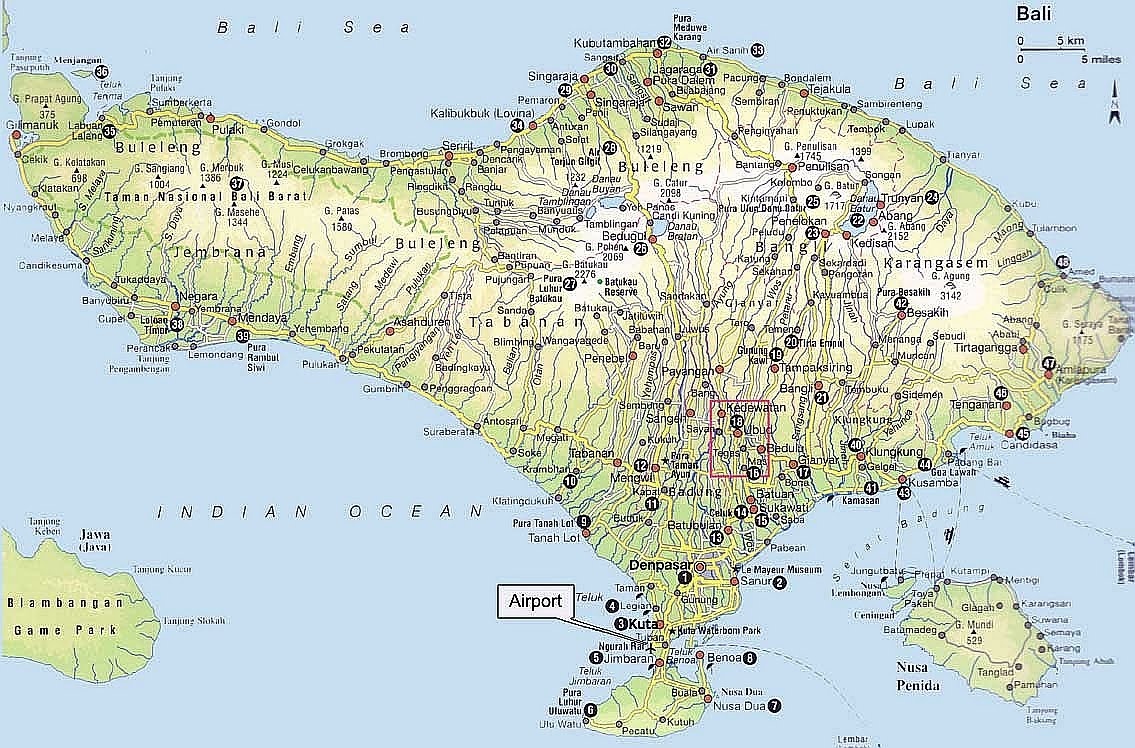Hebron Pintubatu, the middle-aged village head of Dolok Tolong in Dairi regency, North Sumatra, is fond of reminiscing about the heyday of Sidikalang coffee.
The famed beans, named after a town in Dairi, were once the only commodity grown in the village according to conventional cultivation methods.
"Now Sidikalang coffee production has considerably declined and we can no longer rely on this commodity for a living," Hebron said.
The coffee grower and member of the Martabe Farmers Group said the 1980s saw the peak of success for the coffee business in the village. Between 2005 and 2007 coffee prices slumped, forcing many farmers to turn to other crops or to abandon their plantations. When prices began to stabilize and even rise in 2007, production was far below expectations — and still is.
Rolinson Limbong of the farmers' group said out of the 250 Arabica coffee plants he had grown, only 35 kilograms were produced in the November/December harvest last year. In March of this year, the harvest turned out half the previous quantity.
"We can no longer predict harvest yields and how much money we will earn so we need additional income," the father of two said.
The increasing need to support daily needs prompted 387 families in seven hamlets of Dolok Tolong to replace Robusta crops with Arabica.
Although Robusta has better flavor, it takes a longer time to harvest while the amount of land is limited, so farmers have chosen to grow the short-term variety by the intercrop method. Their coffee output is sold to collectors affiliated with Koperasi Baperda Organik, a regional cooperative.
"Dolok Tolong can join the cooperative within two years in line with our production increase," said Parulian Situmorang, chairman of Martabe. His group has 25 members representing the three hamlets of Dolok Martabe, Pasar Lama and Aek Nauli.
They are interested in becoming part of the cooperative to avoid pre-harvest sales at low prices, which trap them in poverty.
All members have joined the field school of Conservation International Indonesia (CI Indonesia). For eight months they were trained in appropriate and sustainable coffee cultivation as well as compost making. They were provided with grinders, compost ingredients and fertilizer storehouses.
Seedlings were also supplied, which were cultivated into young eucalyptus, lamtoro, mindi, sengon and ingul trees that were planted along with coffee bushes.
The concept of conservation implemented by the Martabe Group has brought them to the process of certification for sustainable coffee management.
"We're carrying out intercropping because coffee grows better under the protection of trees against direct sunlight and heavy dew.
The trees can also be a source of extra income for us," said Japen Habeahan, who planted eucalyptus to shade his coffee.
In June he started growing 1,000 eucalyptus trees at 2.5-meter intervals on a 1-hectare plot, with a coffee plant placed amid four trees.
"This is called the five-point method of organic and conservational cultivation suited to the impact of climate change today," Japen said.
Trying to imitate Japan, 30 families from three hamlets in Dolok Tolong, with the assistance of CI Indonesia, proposed to participate in Community Forest (HKm) development along with five other villages: Perjuangan, Pargambiran, Sileu-leu Parsaoran, Barisan Nauli and Tanjung Beringin I in Sumbul.
The problem was they live around the forest that serves as a water catchment area for Lake Toba and the hydropower plant of Lae Renun. The plant depends on forest conservation around the lake because it guarantees the supply of water to propel power generating turbines.
Appreciating the villagers' desire, the Dairi regent made a request for HKm working areas in Sumbul district to the Forestry Minister. Sudriyanto from the Wampu-Sei Ular River Basin Management Agency said his office was cooperating with CI Indonesia and the Dairi forestry office to communicate the government regulation and policy on HKm to locals.
Okbertho, head of the Dairi forestry office's forest protection division, said a forest zone management scheme to accommodate the community's economic interests and forest conservation in the regency would be needed.
"Facilitated by CI Indonesia, the Sumbul community proposed two HKm areas to the minister," he added. They are 10,800 hectares projected by the Dairi Sustainable Coffee Farmers Forum and 1,800 hectares by the Conservation Farmers Group. Dolok Tolong, as one of the six villages in this group, shares 300 hectares.
The two forest locations proposed have mostly been utilized by the farmers for coffee plantations. "In fact, the forest zone is important and has the hydrological function of a water catchment area for the conservation of Lake Toba's ecosystem," he said.
According to Okbertho, coffee farmers want to utilize the forest under the pattern of agroforestry and payments for environment services in the context of Reducing Emissions from Deforestation and Forest Degradation (REDD), but their knowledge is very limited.
"The forest areas requested have generally met the criteria for HKm working areas, leaving only their verification by a team and the regent's licensing. We've conducted pre-verification and the license takes a fairly long time to process, but when the principle permit is issued locals will have a legal basis to continue," Okbertho said.
"It's most important to strengthen the community's institutional setup. CI Indonesia supports farmers' involvement in forest conservation, among others through community-based forest management like HKm development. For Sumbul, coffee cultivation is appropriate because of the district's majority of coffee growers," said Fazrin Rahmadani Sumatra program manager of CI Indonesia.
"At present Lake Toba's water flow rate is drastically declining so that power supply from the Lae Renun generating plant is limited. Forest conservation and land rehabilitation in the ecosystem of Lake Toba is thus very crucial," he said.
Another opportunity is the Lae Renun power plant's program to provide Rp 5 in compensation per KWH for replanting. The greening effort can be undertaken through environment-oriented agriculture that preserves soil fertility to retain rainwater for erosion prevention.
"The villagers should rise up to build their own rural land," Fazrin added.







